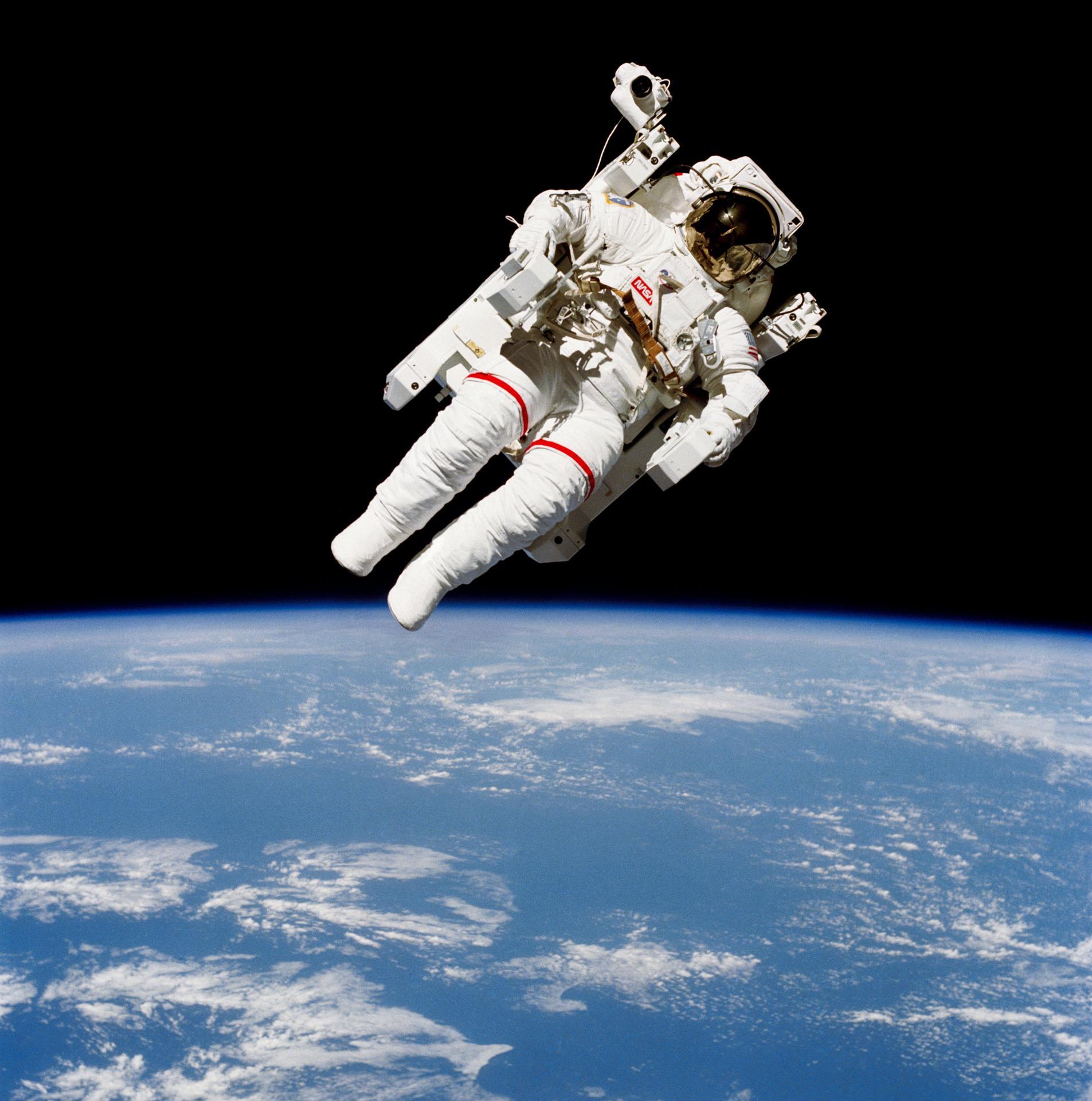4.02.2024

As astronaut Bruce McCandless II flew the Manned Maneuvering Unit (MMU) out of the space shuttle Challenger’s payload bay for the first time on February 7, 1984, many in the agency were fearful about the use of a self-propelled and untethered backpack in space. (Previous spacewalkers remained connected to the vehicle with tethers. This jet-pack allowed crews to move outside of the cargo bay and perform activities away from the safety of the spacecraft.) He remembered trying to ease the tension for his wife and the flight controllers in Mission Control, saying something similar to Neil Armstrong’s declaration as he first stepped on the Moon in 1969. “It may have been one small step for Neil,” he proclaimed, “but it’s a heck of a big leap for me.”
It may have been one small step for Neil, but it’s a heck of a big leap for me.

BRUCE MCCANDLESS II
NASA Astronaut

The MMU was the highlight of the STS-41B mission as demonstrated by the stunning mission photographs that graced the cover of Aviation Week & Space Technology, not once, not twice, but three times.
“Hoot” Gibson, the flight’s pilot, shot the photograph featured on the February 20, 1984, issue of the magazine from the crew cabin. Gibson remembered he was the only one on the crew that “had absolutely nothing to do” as McCandless made his way out into space, so he picked up a Hasselblad camera and began documenting the events. When he first looked through the camera’s viewfinder, he could not believe what an incredible sight it was to see McCandless untethered, floating above the Earth. Gibson wanted to capture what he was seeing and remembered how meticulous he was. For each photograph he took three light meter readings and checked the focus four times. In the crew’s photography training he learned that an off-kilter horizon looked wrong and was not pleasing to the eye. That presented a slight problem because Challenger was at a 28.5-degree inclination, so he “tilted the camera to put the horizon level in the pictures.”

The result was one of NASA’s most iconic and requested images. McCandless called the photograph “beautiful, partly because the sun is shining directly on me.” His son, Bruce McCandless III, said his father “appears to be glowing.” Because the sun was in his eyes, he closed the helmet visor, which made it difficult to identify who exactly was inside the spacesuit. “My anonymity means people can imagine themselves doing the same thing,” he said. And, he added, “at visitor centres [sic], they often have life-sized cardboard versions with the visor cut out, so people can peep through.” Perhaps more importantly, as expressed by United States Senator John McCain, the photo “inspired generations of Americans to believe that there is no limit to the human potential.”
A second, but less recognized image, appeared on the cover of Aviation Week & Space Technology the following week: February 27, 1984. Also taken by Gibson, the image featured McCandless on the Manipulator Foot Restraint or “cherry picker” device at end of the Remote Manipulator System (RMS). The restraint was a platform where spacewalkers could work outside the vehicle but remain anchored at the end of the RMS to repair a satellite or other activities. STS-41B marked the first test of the new apparatus. Gibson explained how he chose to capture McCandless on the device. “What I did was I shifted the camera so that he wasn’t right in the center of the picture. I put him on the edge and the orbiter’s rudder on the other edge of the picture. That made a really cool photo.”

A third image from the mission appeared on the March 12, 1984, cover of the magazine. The photograph, taken by a fixed camera on McCandless’s helmet, captured Challenger in its entirety, which included the payload bay with the Shuttle Pallet Satellite and a glimpse of astronaut Robert Stewart standing just beneath the spacecraft’s RMS.

These photographs from STS-41B, from the tenth flight of the space shuttle, illustrate just how engaging and exciting shuttle missions were. While flying in space became more routine in the 1980s, no one, not even the crew, “appreciated how spectacular” the first MMU flight “was going to be.” The STS-41B photos demonstrated that human spaceflight remained just as captivating, breathtaking, and inspiring as it had always been.

Astronaut Bruce McCandless on First-ever Untethered Spacewalk
Quelle: NASA
